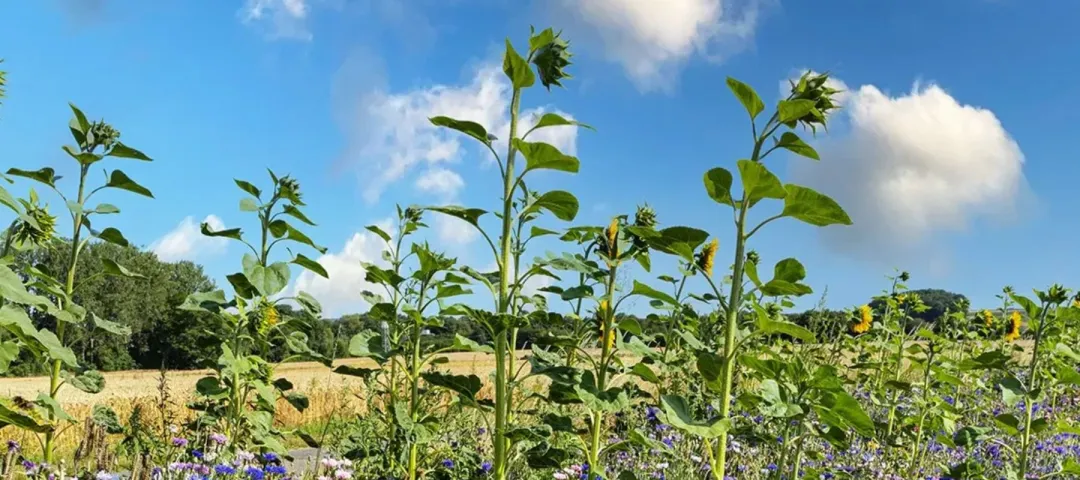Biodiversity actions at scale for sustainable and resilient agriculture
Easily accessible, inspiring documents present the main findings of the Thematic Group on Enhancing Biodiversity on Farmland for Improved Resilience, including good practices from across the EU.
Incentives to support the maintenance, restoration and recreation of species and habitats on farmland, as well as extensive farming systems that are beneficial for biodiversity, have been in place for decades. However, their focus has predominantly been on the management of single farms and single parcels of land. While this has led to local successes, there is a need for greater collaboration and coordination between farmers (and with other actors, such as environmental experts and local communities) to achieve better results in terms of habitat restoration and connectivity. This is biodiversity action at the landscape scale.
The EU CAP Network Thematic Group (TG) on Enhancing Biodiversity on Farmland for Improved Resilience examined ways to encourage greater uptake and spatial coordination of biodiversity practices on farmland to improve the sustainability of farming practices, the restoration and establishment of habitats, and the resilience of farming systems. The TG focused on the benefits of working collaboratively with other farmers to achieve impact at the landscape scale.
TG members – a group of 40 CAP stakeholders from across the EU – engaged in two formal meetings and a series of informal exchanges, the typical format of the Thematic Groups on CAP implementation. They shared experiences and examples, and identified barriers and opportunities relating to scheme design, implementation and monitoring.
An outstanding list of good examples
Thanks to contributions from its members, the TG produced the briefing “Biodiversity actions at scale – inspiring examples from Member States”. The document presents a selection of initiatives that promote collaborative biodiversity action on farmland, beyond the single farm.

The briefing presents successful initiatives that are funded from a range of sources, including the Common Agricultural Policy (CAP), but also other EU funds (e.g. LIFE, Interreg, Horizon Europe) as well as funding sources such as foundations and national funding. The majority of the examples are from initiatives that support the management of farmland for biodiversity purposes; however, it also includes a few other examples of initiatives exploring other means of stimulating biodiversity action at scale, such as via market signals or the use of biodiversity credits.
The aim of the briefing, which is not a comprehensive list, is to offer a flavour of the range of initiatives that are happening in different parts of the EU and to provide inspiration to others. Examples range from the 34 Boerennatuur Flanders farmer groups, in which Flemish (Belgian) farmers cooperate on agrienvironmental measures (biodiversity, landscape, soil, water), to the ‘MoNaKo’ project, which combines national and CAP funding to pilot nature conservation cooperatives in Germany. Some projects have been so successful that follow-ups are already in place, such as the Spanish project ‘LIFE in Commonland’, which introduced a sustainable model for conservation and rural development in special areas of conservation. Other initiatives – such as a CAP intervention in Sweden focused on new flowering areas and other small biotopes – have recently started.

More information on enhancing biodiversity on farmland
To learn more about the work of this Thematic Group, you can check the event reports summarising the key outcomes of the first and second TG meetings.
The event report of the second TG meeting also includes policy recommendations formulated by TG members, reflecting their practical experience and the lessons learnt during the thematic work. The recommendations concern three main areas of action: scheme design, scheme implementation and monitoring, and communication and capacity building. The policy recommendations are also summarised in the final TG Briefing.
More inspiration will be available soon via a new EU CAP Network Projects Brochure that will be dedicated to biodiversity on farmland (to be published in early summer 2025).
To be informed, and to stay up-to-date with the EU CAP Network's work on this topic, you can visit the Thematic Group page regularly, subscribe to our monthly newsletter and follow @EUCAPNetwork on social media (#BiodiversityForResilience).